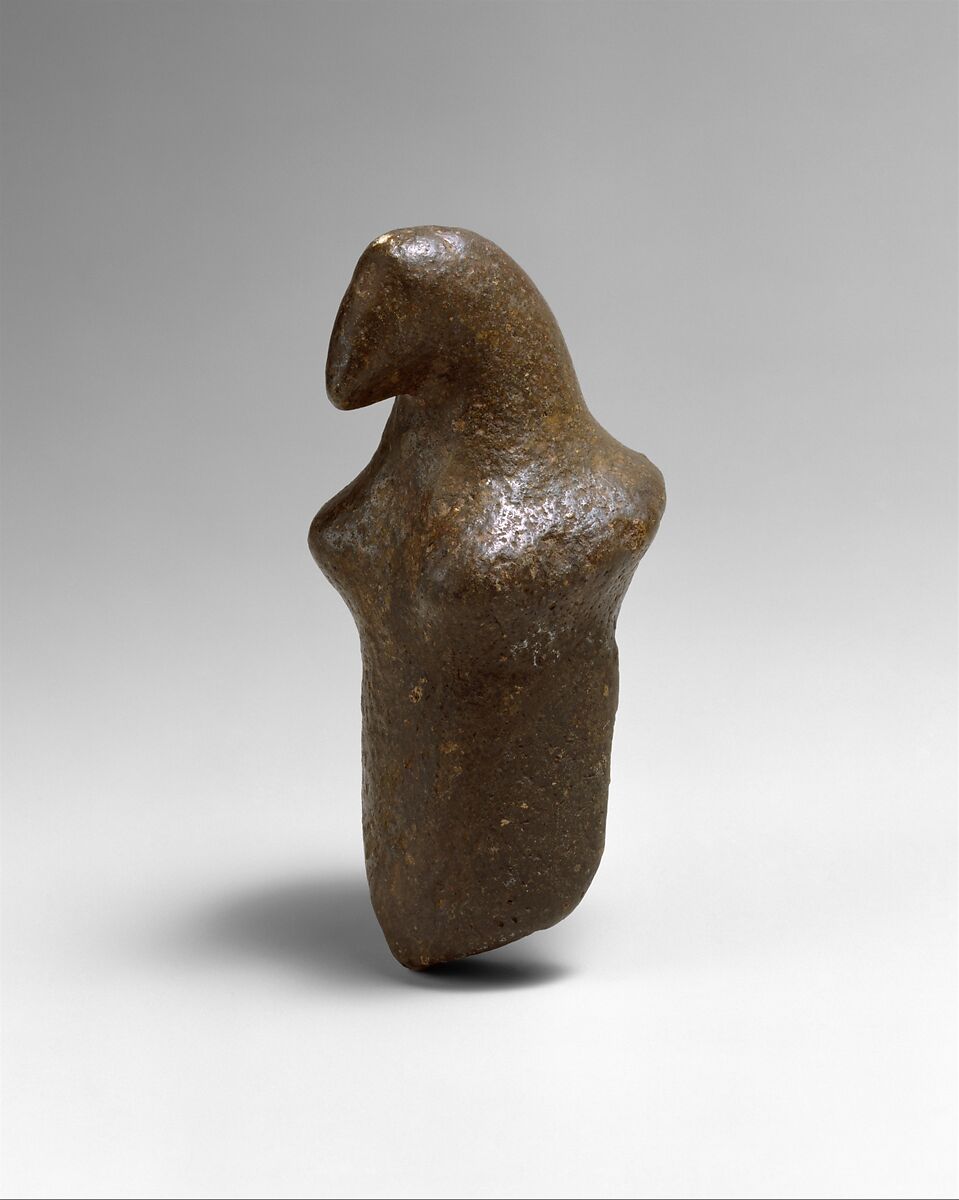Pestle Finial from Papua New Guinea

Annotation
This image is of a pestle finial in the shape of a bird from an unknown culture in ancient Oceania. Pestles are a tool used for crushing or grinding, often used for cooking ingredients such as spices, and were likely also used with other stone mortars that have been found in the region. This item may also have been used to prepare pigments for bodypaint to be used in ceremonial or ritualistic contexts. Though this figure cannot be conclusively dated because of the lack of secure archaeological evidence, it likely dates from around 1500 BCE in the highlands of Papua New Guinea. The tops of pestles were carved to look like birds, such as this one, or other animals, and also human heads. Though the origin and use cannot be conclusively known, these figures likely also had ritualistic significance for ancient populations and may have represented ancestors or totem species. Today, the Enga people consider found stone figures such as this one to be of supernatural origin and still feature prominently in ritualistic and religious contexts. Students can study the images of stone figures and consider the connection between the past and current ritualistic significance of such objects.
Credits
Pestle Finial, 1500 BCE-1600 CE, Metropolitan Museum of Art, https://www.metmuseum.org/art/collection/search/317802.